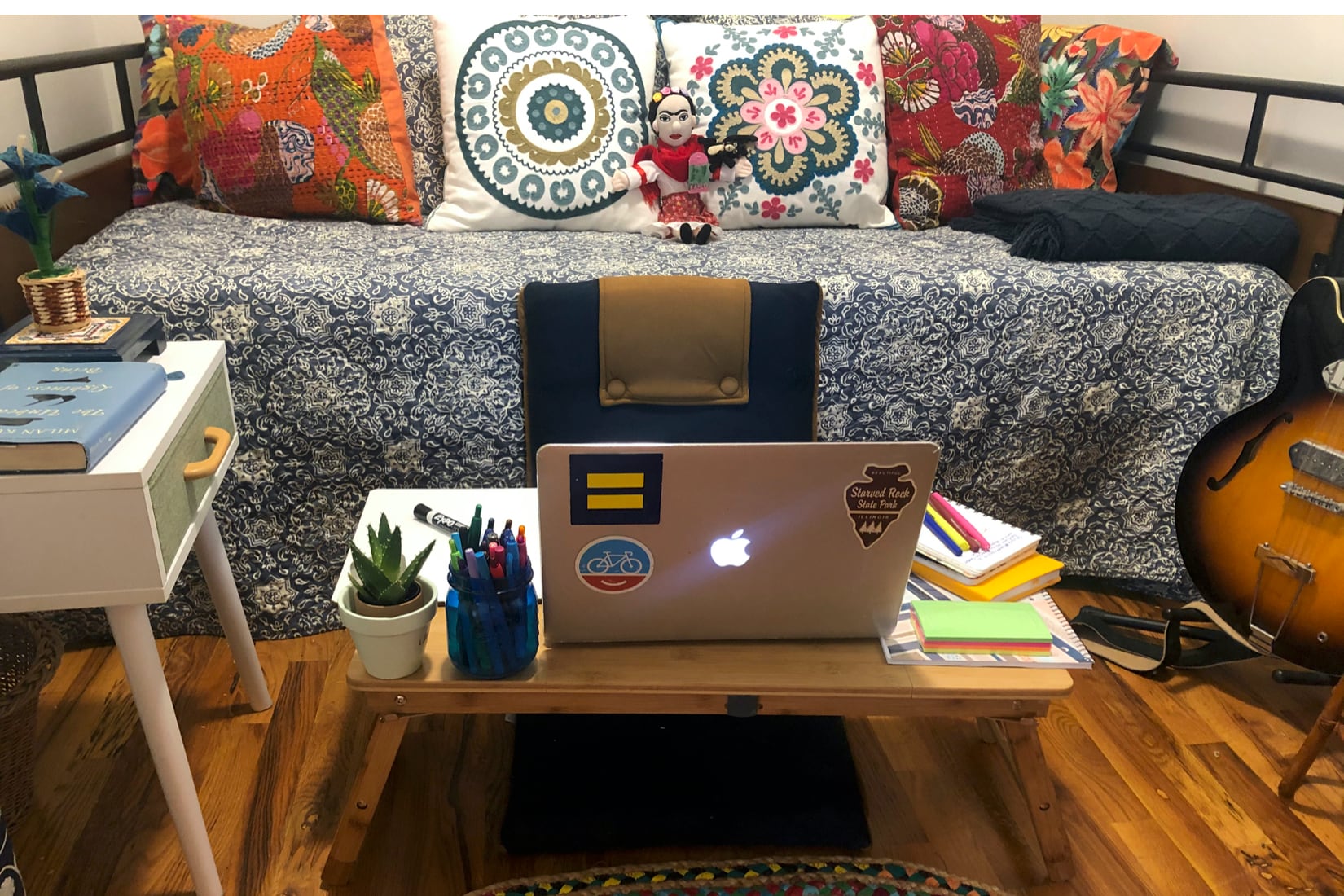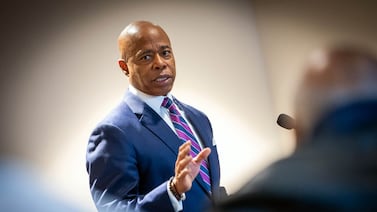“Ms. Kibblewhite? Ms. Kibblewhite?!”
This was unmistakably Kiya’s voice. But, instead of her voice sounding across my classroom when I didn’t respond sufficiently fast to her raised hand, it was now coming through my computer speakers. I smiled — it was so good to hear her, and to be able to respond.
“Kiya? Kiya! Yes! I’m here! I’m here! I just stepped away from my computer for a moment.”
Without missing a beat, Kiya launched into detailed questions about my virtual office hours and our upcoming Google Meets class. I have never been more glad to answer.

Talking across screens has suddenly become the “new normal” for teachers the world over. For teachers in Chicago Public Schools, the third largest district in the nation, serving some 350,000 children, connecting with our students continues to be a challenging and deeply concerning process since many of our children don’t have the 1:1 technology they need.
While my school is connecting with nearly 90% of students on a weekly basis (we are pushing for 100%), I don’t have a full virtual classroom day-to-day. Fewer than half log on each lesson.
Still, I am increasingly hopeful.
I am hopeful because the remarkable team of teachers, school staff, administrators, and parents at my school continue to reach out. I am hopeful because, following weeks of active concern and engaged responses, organizing, telephone calls and messages, written letters, homemade teacher Facebook videos, countless emails, home check-ins and a massive initiative to provide our students with all of our technology from the school, many of our kids are reaching back. Everyday, more of our students join us in class or submit work on Google Classroom; more of our kids are able to see the photos from our year together that we post daily, and to know that we miss them. For those with whom we have connected, we are now figuring out new ways to provide ongoing care and support, new ways to engage and create community. For those with whom we haven’t yet reached, I am hopeful that we will connect soon.
The constant, at times frantic, reaching out across the internet ether is tiring; but I am not alone: My co-workers have also been working tirelessly to connect with students and families at all hours, and adjust learning plans as policy shifts and new requirements have been shared from CPS and state leadership.
During the past three weeks since Chicago formally launched remote learning, I have also thought about my own connections in education and how to forge new ones. These efforts are absolutely essential and have enabled me to keep going through sometimes overwhelming feelings of sadness and loss during this time. I’ve been part of a new community of educators through Teach Plus’ All Means All initiative, which connects teachers from across Illinois with a collaborative space to share ideas and recommendations. Each week, another middle school science teacher and I facilitate discussions around how to engage our students remotely, how to connect with families who still don’t have devices or internet access, and how to support the emotional well-being of our kids as well as their learning.
It hasn’t been a perfect process. But I’m energized (and overjoyed) when I’m with my students online and we discuss ideas, laugh together, and once again experience something that exceeds the exchange of instructional content: meaningful communication, togetherness, and, by extension, ever vital community. My students join in on cell phones, devices they own, and devices they have borrowed as part of CPS’ massive endeavor to get technology to all children in need across our city. Almost all of our 6th grade students have submitted one or more assignments in the past week, and I must remember that remote learning is happening, even if not all of my students are joining us in virtual class — yet.
Some things have surprised me. Students who seldom volunteered an answer in class are newly active in our chat box. Students who I worried would not be active online are present everyday in virtual lessons and submit work regularly.
In virtual class, Kiya is there challenging the thinking of her peers, ensuring that everyone’s mic is muted at the appropriate time, and holding us all accountable, just as she did in our physical classroom. I still tell bad jokes and my students still call me out. I still love being with my kids and teaching, even if it is through a computer screen. My students are remarkable young people, full of tremendous promise and the adaptability of youth. There is such great hope in them.
But hope does not exist in a vacuum. I often think about the gross systemic inequities that keep Chicago schools segregated and determine who has access to learning opportunities and who does not; I think about what these racial- and income-based inequities will mean for our city’s black and brown children next school year and beyond. For these and so many other reasons, I feel deep and constant sorrow and rage. This pandemic has further exposed socioeconomic and racial inequities across this city and country. It is no coincidence that 70% of the lives lost to COVID-19 in Chicago belonged to black men and women: It is systemic.
I am thinking hard about what we must do in response: What kind of educator am I and what will my students need into the future? When we return to the classroom next school year, I will be active in continuing the fight for justice and equity alongside the families we serve. I will be ready to welcome further traumatized and dysregulated children into our classrooms. I will be prepared to be culturally responsive, to listen to our students, be present and patient with them, continue to replace punitive discipline with restorative measures and actively and collectively build back our community of learning together. For now, I feel great hope and comfort knowing that although the ways in which we form our communities have presently changed, we — families, students, educators and school staff alike — are not alone, and we will continue forward together, hopeful that what we are all learning from this challenging time can benefit our future generation of children.
Jessica Kibblewhite teaches sixth grade social science and science at National Teachers Academy on Chicago’s South Side. A Chicago native and CPS graduate, she has four years experience in the classroom and serves as an instructor at Loyola University Chicago. She is a Teach Plus Policy Fellow.








